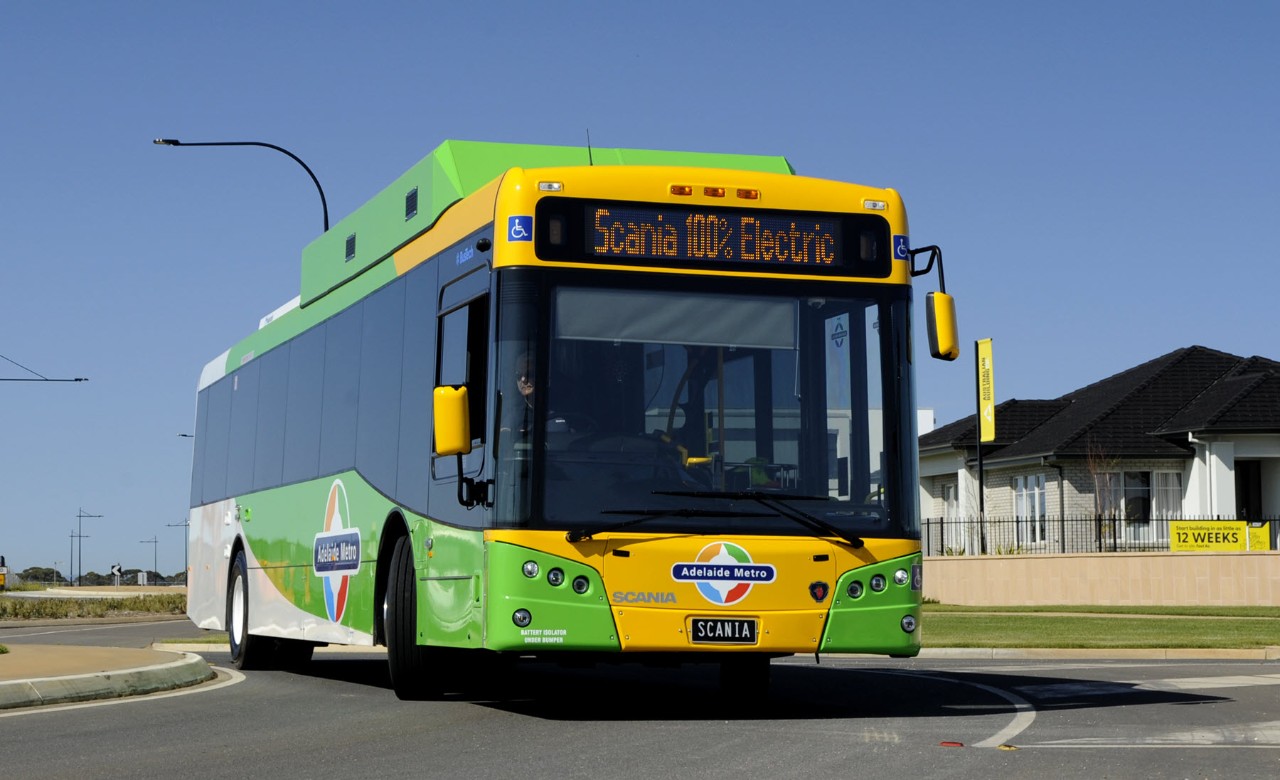
Scania drives zero emission bus programme forward
Adelaide Metro took delivery of Scania’s very first fully electric bus in late 2023, and nine further chassis are currently in build.
Yet such is the pace of development in the BEV environment, further updates to Scania’s zero tailpipe technology are due in Australia within the next 12 months.
“We are eagerly anticipating the arrival of the first of our 3rd generation K-series Battery Electric Vehicle (BEV) chassis,” says Julian Gurney, Director of Sales for Scania Bus and Power Solutions in Australia.
“This comes with a revised E-Machine, and Scania's modular designed powertrain with a 2-speed gearbox, and R 660 drive axle. As ever Scania’s focus on a high degree of chassis component sharing with combustion engines helps to drive down costs and enhance reliability and uptime.
“The front rigid axle is identical to those of the diesel chassis, as is the rear drivetrain module, powered by the E-Machine and gearbox. A robust engine subframe reduces noise and vibrations traveling through the vehicle, contributing to a smoother and quieter passenger experience.
“Four new generation battery packs power the 3rd generation K-series BEV chassis, three batteries strategically placed on the roof, with one in the engine bay, to optimise weight distribution and passenger capacity,” Julian says.
The revised E-Machine delivers a maximum 300 kW at 1400 rpm (with a maximum of
5400 Nm). Continuous power is 230 kW at 1750 rpm (with 3400 Nm) for up to 30 minutes. Range is expected to be around 400 km, depending on specification and usage profile.
By incorporating a 2-speed gearbox, vehicles can benefit from optimised power delivery across a broader range of driving conditions. It allows for better acceleration, enhanced climbing ability, and improved energy consumption by enabling the E-Machine to operate more efficiently within its optimal range.
“The four-battery version provides 416 kWh of installed energy,” Julian says.
The new K-series low entry 4x2 chassis combines increased energy efficiency with a raft of new state-of-the-art electronic safety systems as well as the all-new, all-digital “Smart Dash” driver display which will debut in the 3rd generation K-series BEV chassis.
The vehicle is equipped with advanced Smart & Safe features, fulfilling cyber security requirements in Europe, and boosting safety and security worldwide, both in the chassis and the software.
“Our new 3rd generation K-series heavy-duty BEV chassis is perfect for all weather roads, particularly in urban areas and on intercity routes, with the R 660 rear axle delivering good operating economy and a long service life,” Julian says.
“The new chassis boasts improved Body Builder adaptation flexibility, providing options to customise the chassis to specific requirements, while intelligent drivetrain component positioning simplifies maintenance, reducing costs and improving uptime.”
The new Scania 3rd generation K-series BEV chassis will come complete with a full range of Advanced Driver Assistance functions, as part of Scania’s drive to create a safer road environment.
Scania stands ready to assist its customers transition to zero emissions, at a pace that suits them, and with due regard for the total operating economy of their fleets. In addition, we can provide repair and maintenance contracts through the life of these zero emission vehicles as well as a range of charging solutions, continuing Scania’s tradition as a one-stop-shop for our customers,” he says.
These functions include:
• Advanced Emergency Braking, which initiates automatic braking if the driver fails to react in time.
• Lane Departure Warning alerts the driver if the vehicle is about to cross road markings.
• Adaptive Cruise Control aids the driver in maintaining a consistent time gap with the vehicle ahead.
• Vulnerable Road User Collision Warning alerts the driver if a pedestrian or cyclist is close to the bus.
• Blind Spot Warning informs the driver if a vehicle is in the bus's blind spot.
• Lane Change Collision Prevention aids in avoiding lane change collisions by guiding the bus back to its lane.
• Lane Departure Warning with active steering constantly monitors road markings and steers the vehicle back to its lane if it's about to cross the line.
• Emergency Brake Indication is a flashing signal that alerts other road users behind the bus when the vehicle is braking harshly.
• Driver Attention Support monitors the driver's focus and reminds them to take a break when necessary.
Additional systems fine-tune safety performance and provide even greater driver assistance.
• Vulnerable Road User Collision Warning – Front, alerts the driver to a collision risk at the front of the bus.
• Vulnerable Road User Detection – Rear, uses visual detection to identify the presence of pedestrians, cyclists, or objects when reversing.
• Speed Sign Information System alerts the driver when they are exceeding the posted speed limit.
• Tyre Pressure Monitoring System tracks the air pressure of the tyres in real-time and notifies the driver if they are under or over-inflated.
• Alcolock preparation simplifies the installation of an alcolock.